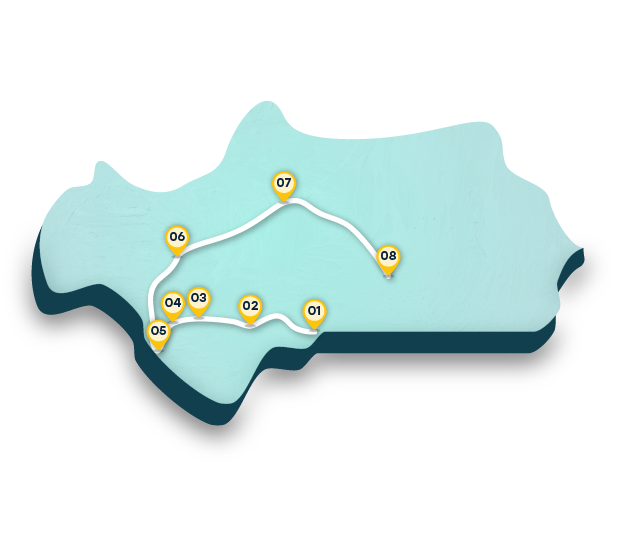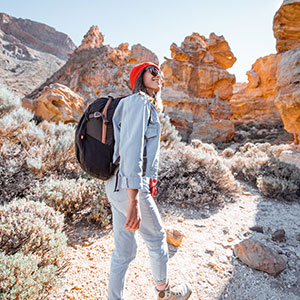Day 1 Málaga
We suggest starting your tour in Malaga, in the heart of the Costa del Sol, with plenty of international flights.
A morning in the historic quarterAfter a good breakfast on Plaza de la Constitución, your first stop could be the Cathedral-Basilica de la Encarnación, known as “La Manquita” (one-armed) because its tower was never finished. Visitors have the option of seeing the views of the city from its rooftops. After that, you could visit the Roman Theatre and the Alcazaba, which was the fortress and palace of the Muslim rulers.In the highest part of this area you’ll see that there is also a castle, Castillo de Gibralfaro, which you can reach on the 35 bus from Alameda Principal. Right next to it is one of the city’s best viewing points, where you can see a good stretch of the coast.An afternoon of museums and shopping on Calle LariosAt lunch, you could visit one of the city’s most iconic tapas bars, El Pimpi, and try the potato salad, flamenquín ibérico, or pringá, and then spend the rest of the afternoon in one of the city’s museums and art galleries, like the Carmen Thyssen or the Picasso Museum. Did you know Picasso was born in Malaga? You can also visit the house where he was born and other places related to the famous painter.If you feel like shopping, the best spot is Calle Larios, a well-known and very lively street full of shops. Sunset by the harbourIf the weather is warm, the late afternoon is a great time for a dip on La Malagueta beach. Otherwise, a stroll along Palmeral de las Sorpresas will bring you to a part of the harbour called Muelle Uno. There you'll find the curious coloured cube of the Centre Pompidou and on foot you'll reach La Farola, an old lighthouse whose construction was completed in 1816. You'll also find a myriad of shops and restaurants to round off your day. and enjoy a beautiful sunset.






















